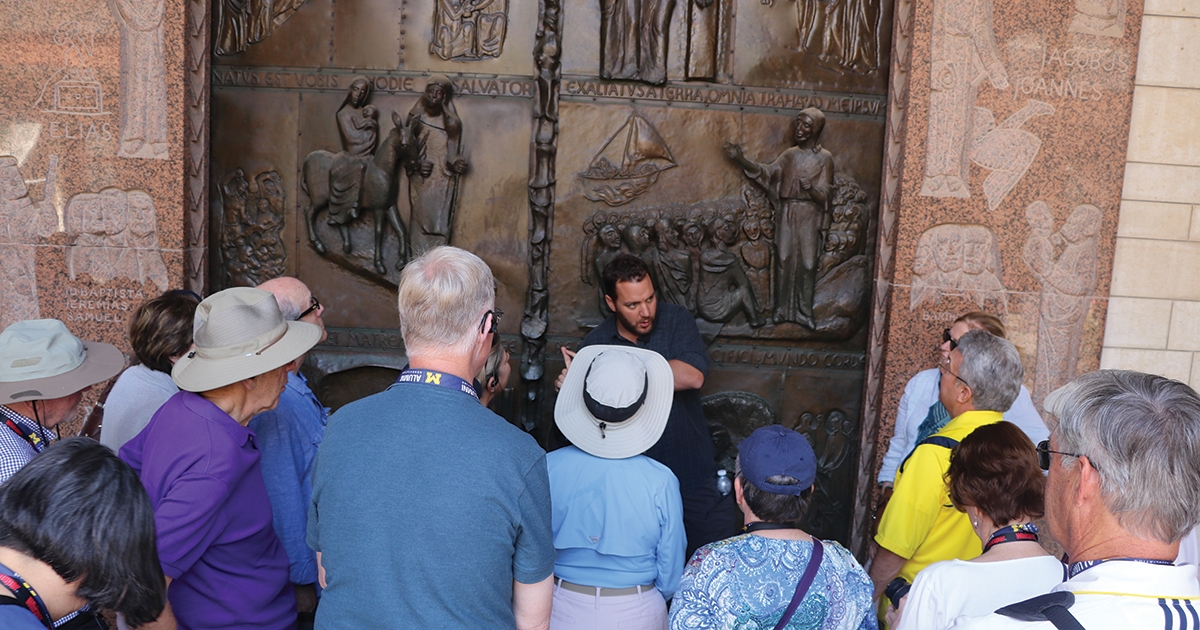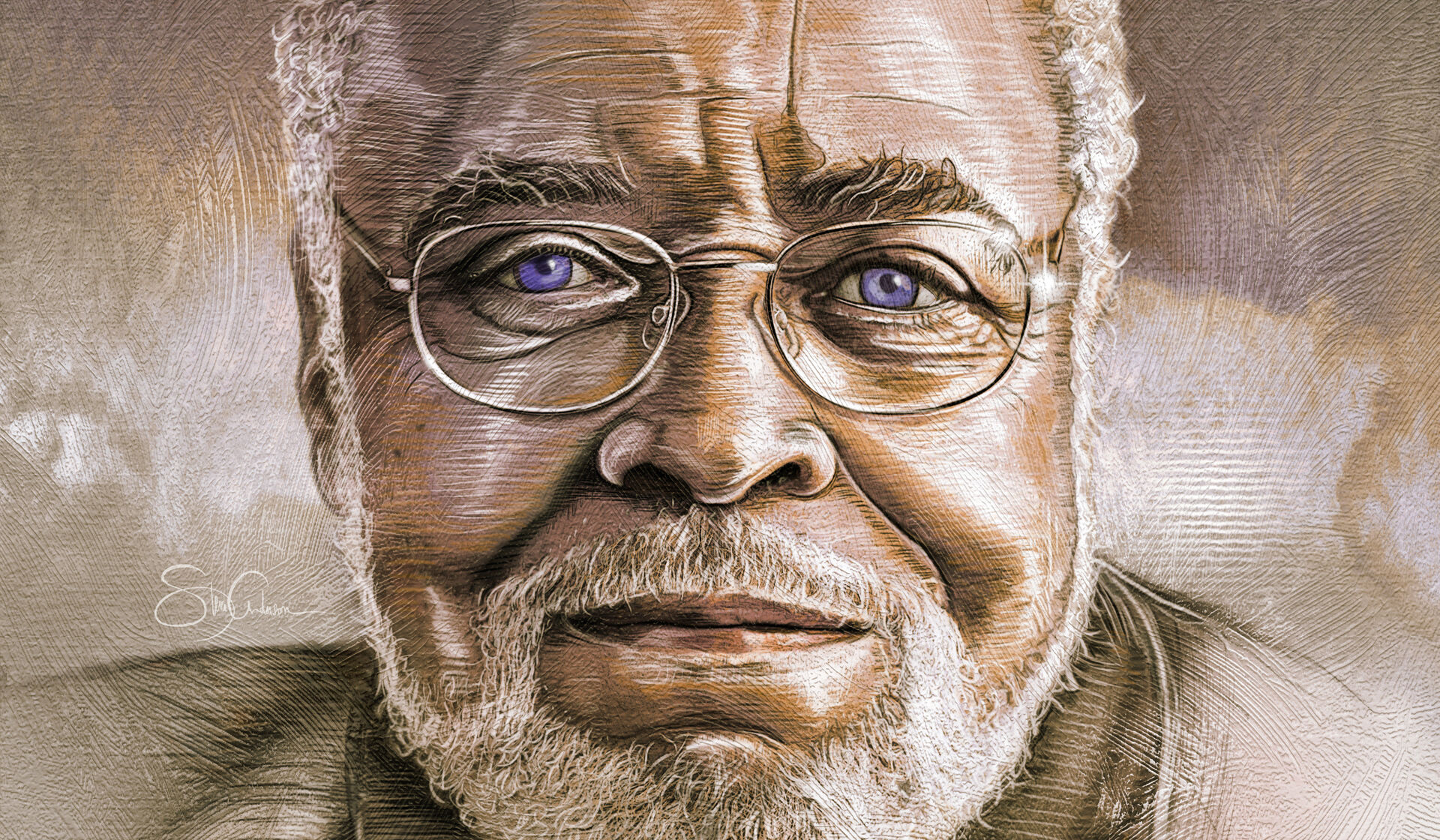Standing in front of the Western Wall in November 2018, my husband, Daniel, and I felt overwhelmed as we pressed our heads and hands into the outer wall of the Temple Mount. Never mind that we were 300 feet apart—separated by a barrier that divides men from women. As an interfaith couple, celebrating our 30th anniversary with this trip to Israel, it only seemed appropriate.
For Jews, like Daniel, the Temple Mount is said to be the site where Abraham demonstrated his devotion to God by taking his son Isaac to be sacrificed. For Catholics, like myself, it is a place where Jesus spent time as a child. When we finally emerged and reunited with our group of 20 travelers, it was apparent we all felt moved by the experience.
And then, a shout ended our solemnity.
“Go Blue!”
We turned to see a group donning Maize and Blue swag like our own—T-shirts, hats, and jackets—though they were bereft of the lanyards displaying the Block M that the Alumni Association had given us to wear on the trip.
“Go Blue!” we shouted back. We quickly learned they were a group of students from the Ross School of Business. Moments later, all 30 of us were dutifully assembled, taking a photo with not one, but two U-M banners. And then we said our goodbyes, promising to email pictures. Had it not already been a frequent occurrence on this 12-day trip, I would have dismissed it as a Michigan mirage.
Yet we had been running into Wolverines nonstop: in our hotel overlooking the beach in Tel Aviv, in our Golan Heights kibbutz, and on the hillside where Jesus preached the Sermon on the Mount. It was a bonus Daniel and I had not anticipated when we signed up for our very first trip with the Alumni Association. As fiercely independent travelers, we had been wary of traveling in a group, even if it was a pack of Wolverines, like ourselves.
Fortunately, our fears evaporated the moment we met our fellow alumni. Our group hailed from six different states, including Texas and North Carolina, and ranged in age from 20 years younger than us, to 20 years older. (No need to be precise, but we are in our 50s.) Some were Jewish, some Christian, and some agnostic. All, however, were eager to learn everything we could about the country, starting on day one when we visited Independence Hall, where the state of Israel had been declared 70 years before.
Equally, any concerns about having a laborious guide were ill-founded. Our Israeli guide, Ron Lahad, was both entertaining and energetic. Whether leading us through the ruins of the Roman harbor of Caesarea or the mountaintop fortress of Masada, he managed to bring each site to life with his artful style of storytelling and knowledge of thousands of years of regimes, rulers, and religions.
“This is an apolitical trip,” Ron said when we first boarded the bus, inviting us to ask even the most controversial questions about the conflict between the Palestinian Authority and the state of Israel. He then explained the many views on both sides of the issue as our bus took us from one end of the country to the other, stopping frequently.
Though we experienced a dizzying array of activities, from wine tasting to milking cows, it was energizing. We toured an artists’ village in Upper Galilee; took in a mountaintop view of Lebanon, Syria, and Jordan; and spent an afternoon floating in the Dead Sea.
After spending a depleting morning at Yad Vashem, the Jewish people’s living memorial to the Holocaust, we visited the picturesque village of Ein Karem, the childhood home of John the Baptist, where a skilled Israeli chef buoyed our sprits with a leisurely lunch and cooking class.
But it was the religious sites—particularly those located in Bethlehem, which required us to cross into the West Bank—that were most memorable for me. Seeing the actual locations of the Stations of the Cross felt surreal.
On the last evening, as our group dined together, discussing all we had seen and learned in such a short time, we realized our bond with one another now went beyond U-M to Israel. However, we vowed to meet up again, hopefully this autumn, in Ann Arbor.
Jennifer Conlin, ’83 is deputy editor of Michigan Alumnus. For two decades, she was a foreign correspondent for the travel section of The New York Times.
Visit umalumni.com/travel in mid-April to discover the Alumni Association’s 2020 travel destinations.





